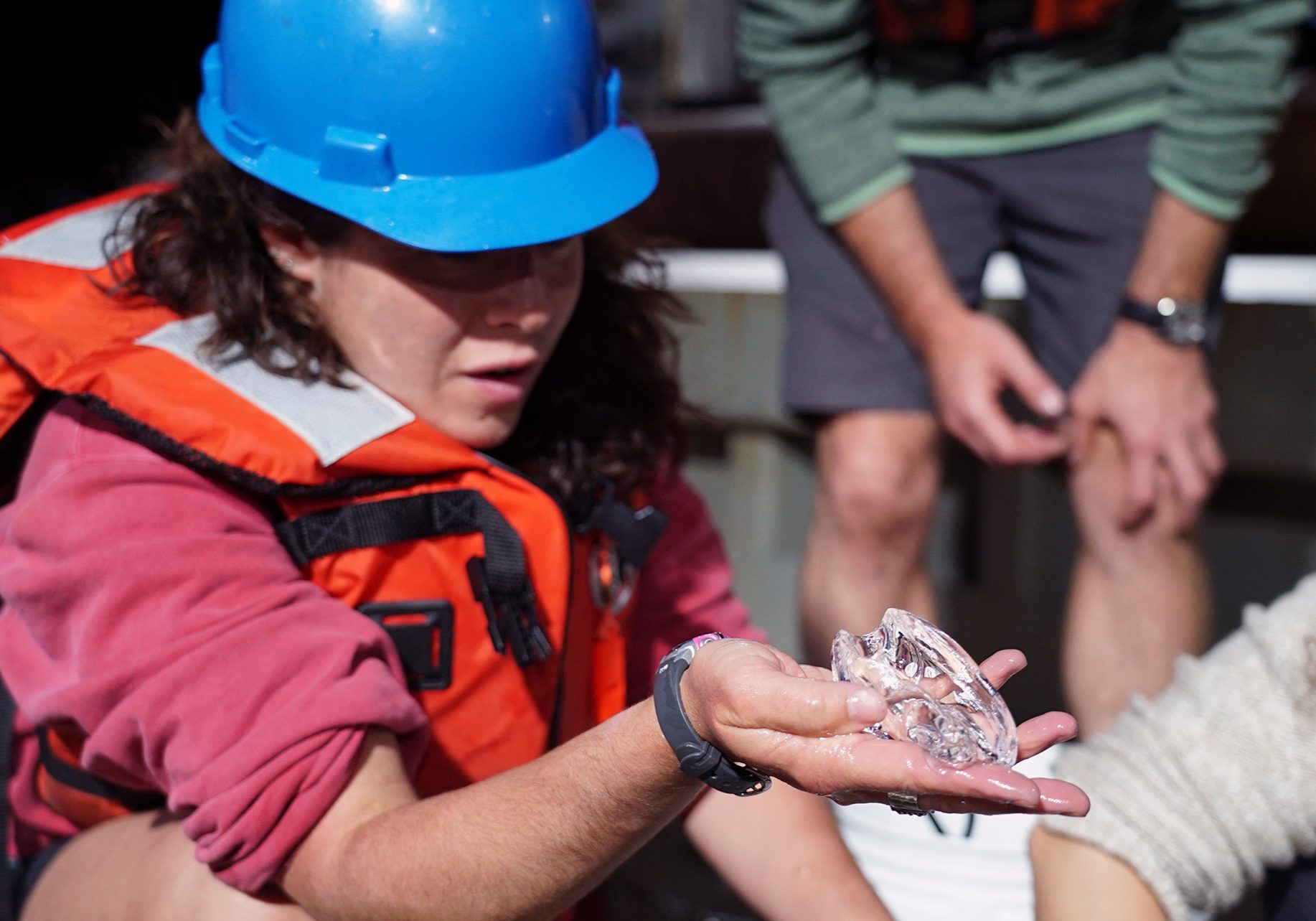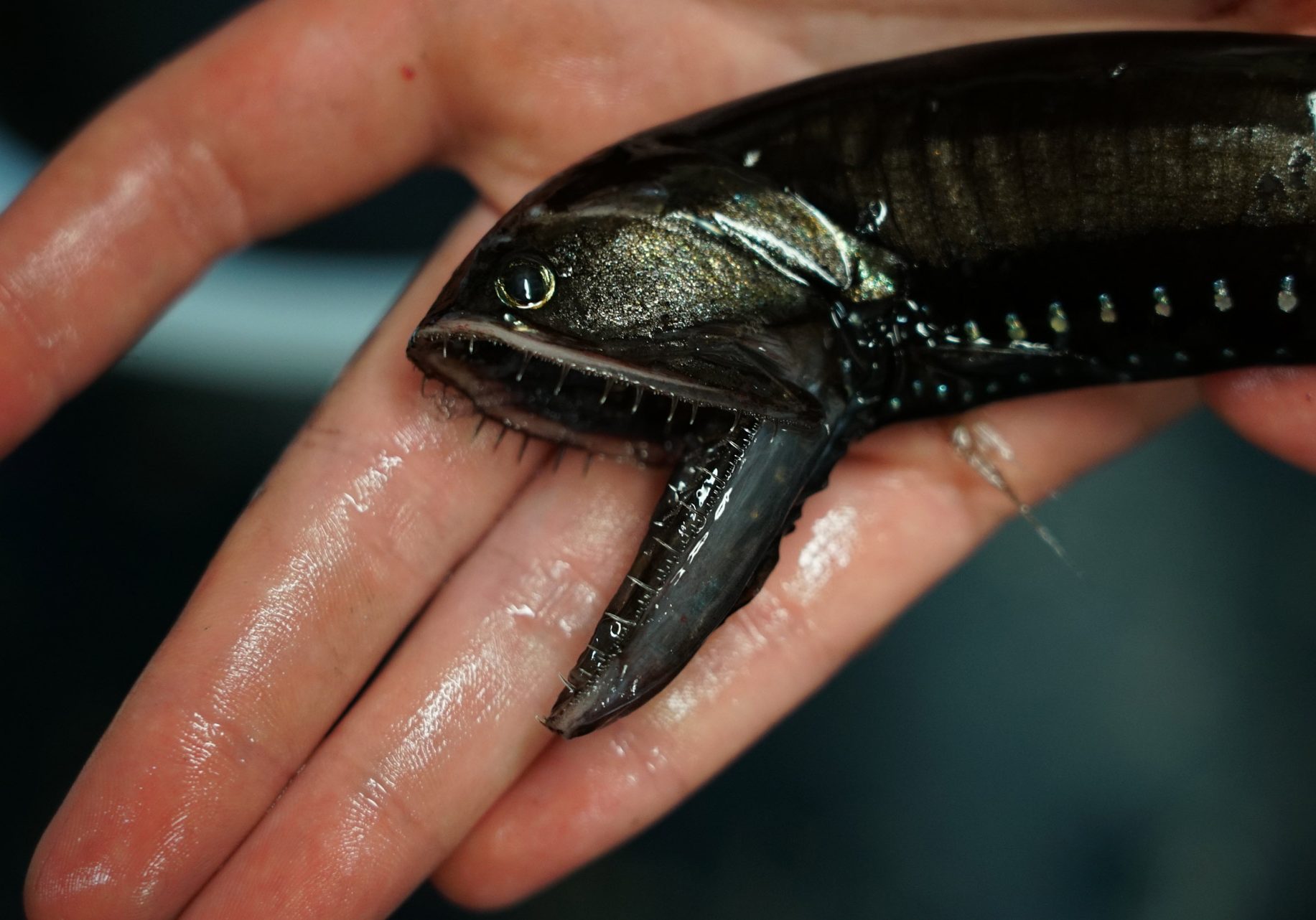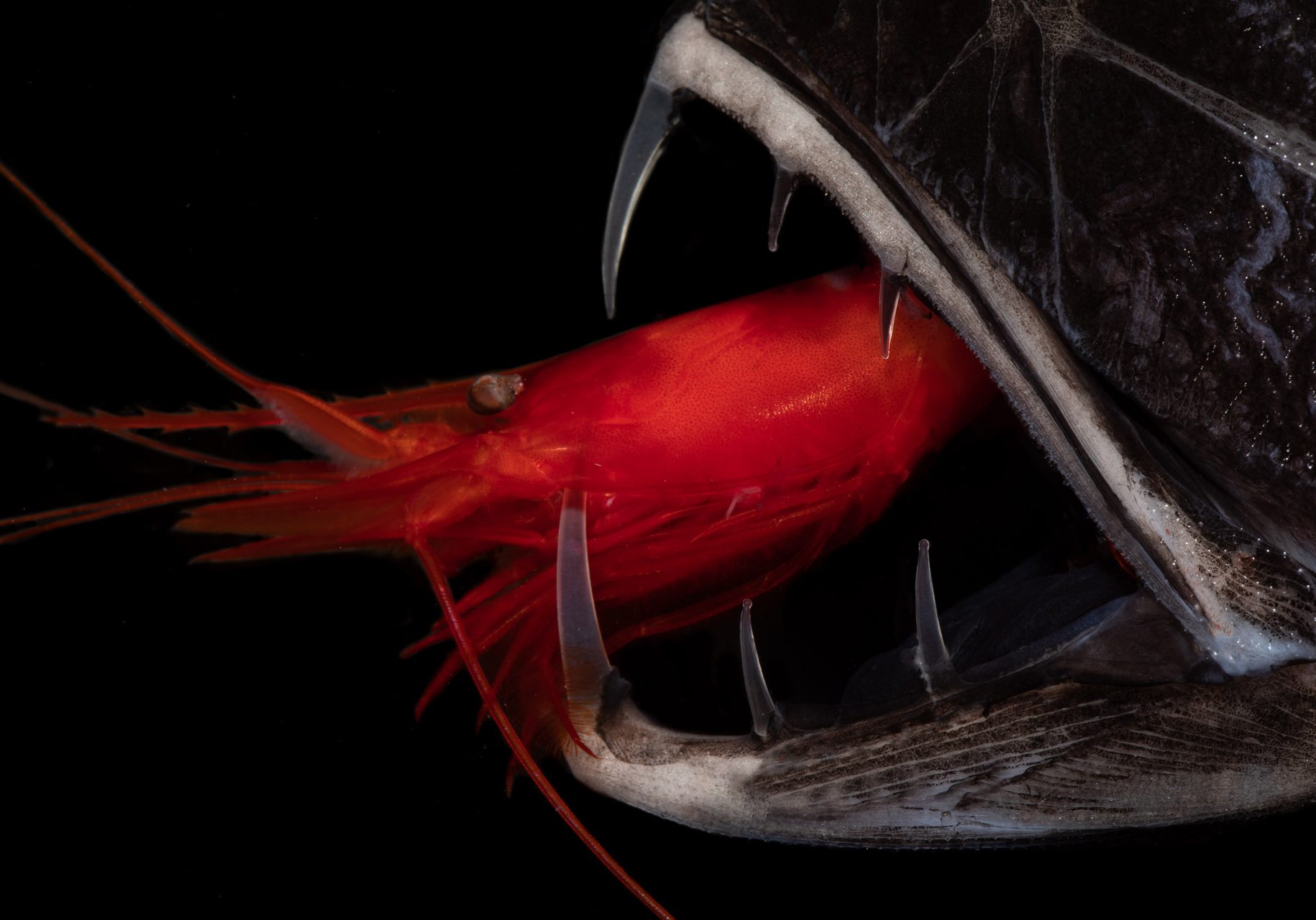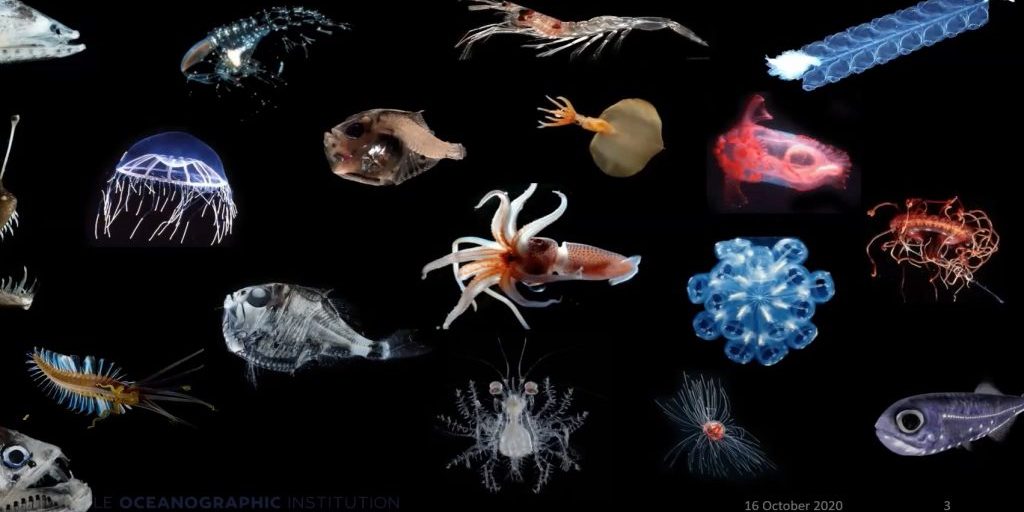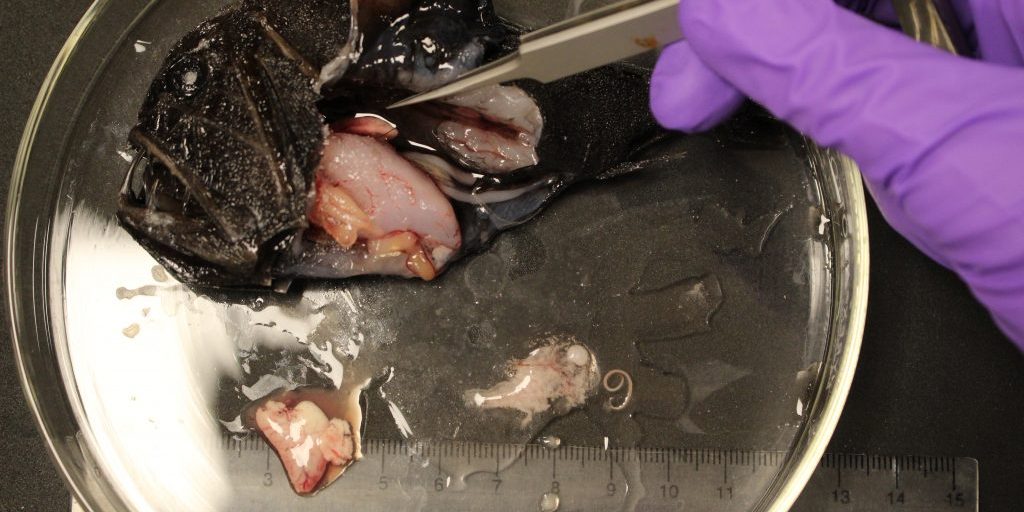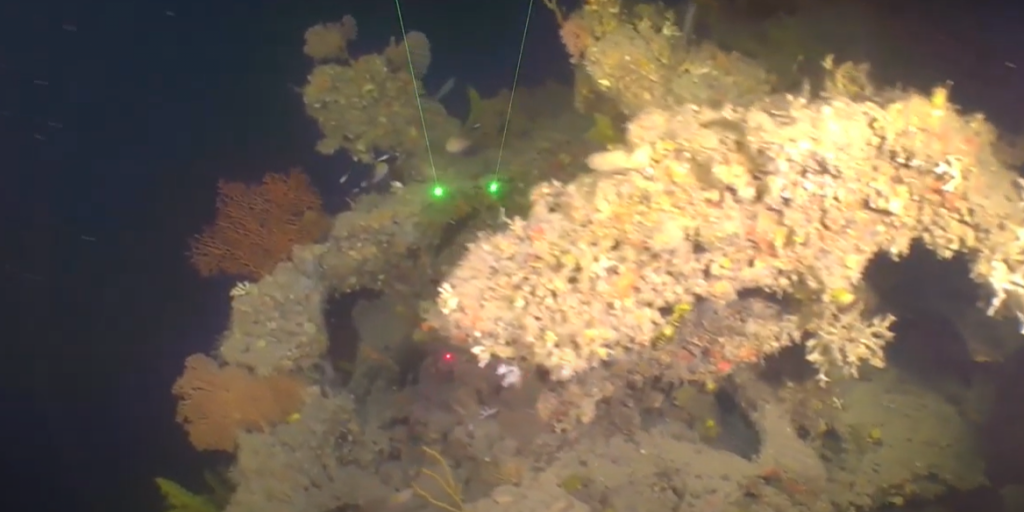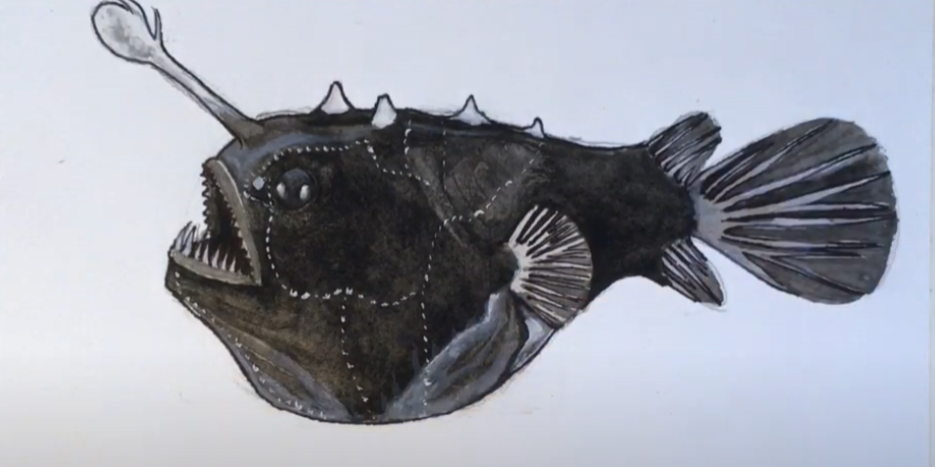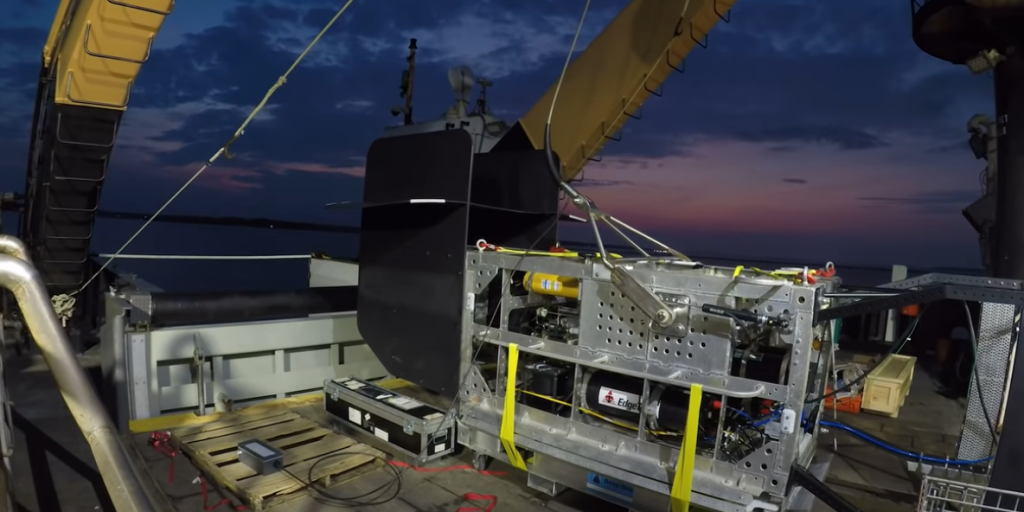Food webs in the ocean twilight zone
What is a food web?
A “food web” describes how every animal in an ecosystem gets its energy. It lets scientists map out who eats who, from the smallest microorganisms to the largest predators. Each step of the web is called a “trophic level”. The lowest trophic level In the twilight zone, for example, is made up of plankton that get their energy from sunlight. Animals that eat those plankton make up a second, higher trophic level, and are in turn eaten by animals in an even higher trophic level. These levels continue up the food web to include top predators like sharks, whales, and humans.
How will studying the twilight zone food webs help humans?
Knowing what every animal in the twilight zone is eating is essential for understanding the zone’s role in the marine ecosystem. The twilight zone is enormous, covering all of the world’s oceans from approximately 200-600 meters below the surface—and many valuable commercial fish around the world survive by feeding on twilight zone animals. Learning how its food webs works will help us manage those fisheries sustainably in the future. It may also help us understand how the twilight zone affects global climate by absorbing and sequestering carbon dioxide.
How much life do we think is in the twilight zone?
There’s a vast amount of life in the twilight zone. Most of it is tiny, just a few inches long or less. But some, like gelatinous siphonophores, can form chains that extend as much as 130 feet, making them among the biggest animals that exist today. Even the smallest twilight zone inhabitants can be powerful through sheer number, however. A tiny but fierce-looking fish called a bristlemouth is the most abundant vertebrate on the planet, likely numbering more than a quadrillion individuals. That’s more than 100,000 bristlemouth fish for every human currently alive.
Copepods like these pictured are the base of the ocean twilight zone food web.
Who are the top predators in the Ocean Twilight Zone?
There are many predators at the top of the ocean twilight zone food webs. Some commercially important species like swordfish and tuna dive from the surface down into the twilight zone to feed, as do animals like northern elephant seals, sperm whales, and even king penguins. The majority of the predators in the twilight zone spend their entire lives in its dark waters, however. These include bizarre-looking species like bristlemouth, fangfish, viperfish, and angler fish. Although they’re much smaller than the animals which dive into the zone for food, they exist in far greater numbers.
What sorts of adaptations do animals in the twilight zone have to find and catch prey?
Microbes, plankton, jellies, and fish—everything living in the twilight zone has amazing adaptations for life in such an extreme environment. Many animals can produce their own light using a method called bioluminescence. These glowing patches of their bodies can help them camouflage themselves, scare off predators, or even attract prey. Since little sunlight makes it to the twilight zone, many animals hunt using only specialized organs that detect movement and vibration in the surrounding water.
How will we figure out who is eating who in the Ocean Twilight Zone?
In order to map out the twilight zone’s food web, researchers need to understand what species are down there, and how many of them are present, and what other species they’re each eating for food. and who is eating who. Scientists from the OTZ team are doing that using a variety of new tools, each of which can help answer specific questions about the twilight zone’s food web.
Some researchers are tagging top predators with high-tech sensors which can track their movement through the ocean, revealing how the depth and frequency of their dives and provide clues to where and when they might go to feed. Others are using huge towed nets to collect ocean life in the zone, and are analyzing DNA and biochemicals they find in the animals’ stomachs to figure out what they’ve been eating. A third group of scientists is collecting water samples from the twilight zone to study stable isotopes and environmental DNA—traces of DNA left behind by animals—which will tell them exactly what species are present in the nearby ocean, and where their position in the food web may be.
New robotic vehicles and instruments are helping WHOI’s research efforts as well. A towed vehicle called “Deep-See” carries specialized sonar that can identify, count, and measure tiny organisms in the water around it, and a larger autonomous vehicle called Mesobot can follow elusive species in the twilight zone for hours or days, capturing detailed images of their behavior.
Do animals from the twilight zone and the surface interact?
Yes! Every night, the world’s largest migration of animals takes place between the twilight zone and the upper ocean. As surface waters become dark after sundown, zooplankton, mollusks, fish, crustaceans, and other marine organisms rise up from the twilight zone to feed on phytoplankton. Since those phytoplankton create energy from sunlight—and absorb carbon dioxide in the process—this migration is both a vital step in the marine food web and a critical part of carbon sequestration in the ocean.







